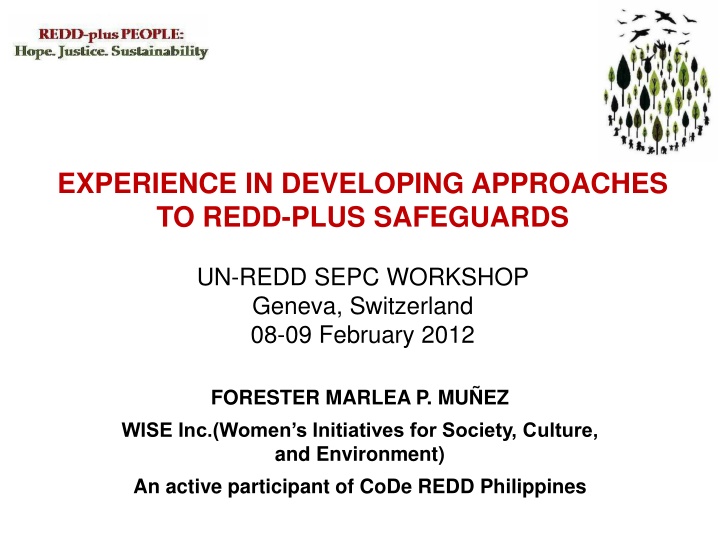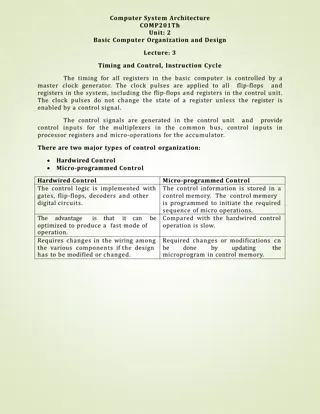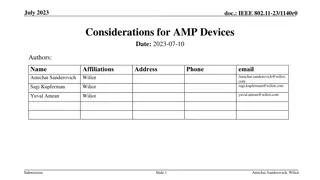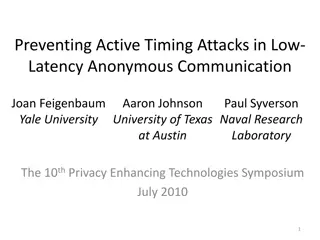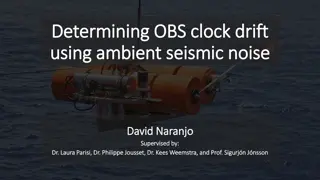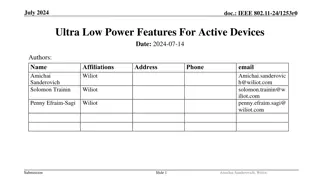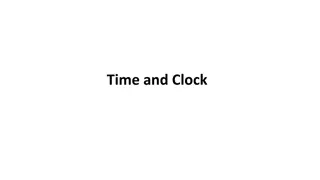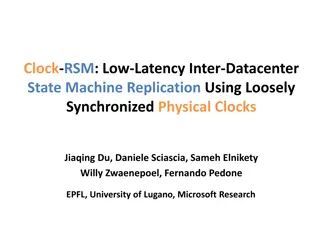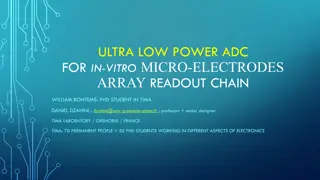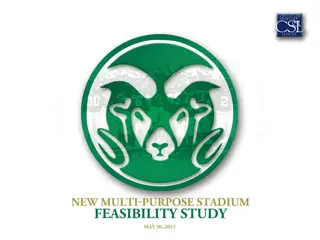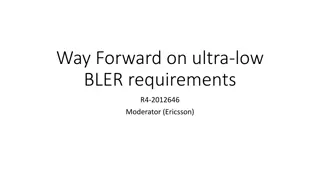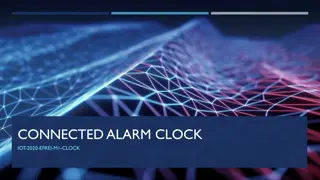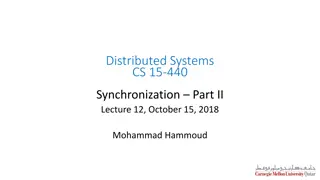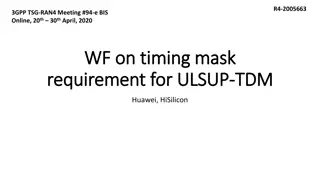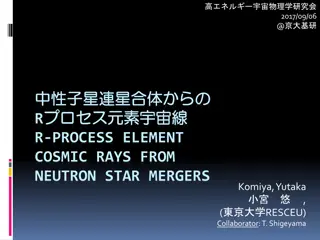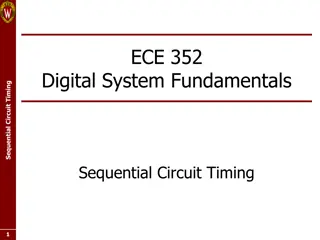Discussion on Ultra-Low Power Timing Clock Feasibility
In this submission, the necessity of maintaining timing clocks by AMP devices is discussed, along with the feasibility of implementing ultra-low power timing clocks in AMP devices. The timing requirements are also proposed, considering device capabilities and design targets for Ambient IoT. Differentiation factors from existing technologies, operation states, and operational procedures of AMP devices are covered.
Download Presentation

Please find below an Image/Link to download the presentation.
The content on the website is provided AS IS for your information and personal use only. It may not be sold, licensed, or shared on other websites without obtaining consent from the author.If you encounter any issues during the download, it is possible that the publisher has removed the file from their server.
You are allowed to download the files provided on this website for personal or commercial use, subject to the condition that they are used lawfully. All files are the property of their respective owners.
The content on the website is provided AS IS for your information and personal use only. It may not be sold, licensed, or shared on other websites without obtaining consent from the author.
E N D
Presentation Transcript
EXPERIENCE IN DEVELOPING APPROACHES TO REDD-PLUS SAFEGUARDS UN-REDD SEPC WORKSHOP Geneva, Switzerland 08-09 February 2012 FORESTER MARLEA P. MU EZ WISE Inc.(Women s Initiatives for Society, Culture, and Environment) An active participant of CoDe REDD Philippines
ers: as of August 8, 2011 NTFP KEF AnthroWatch PFEC ULAN Philippines ELAC IDIS FFI CoDe REDD-Philippines is a loose coalition interested in seeing a responsible REDD- Plus mechanism. The coalition believes that any REDD-Plus project/programme should be implemented according to the principles of community empowerment, biodiversity conservation, and sustainable management of forest.
Key Phases in REDD-Plus and Considerations IDEA Start up & implementation DESIGN Validation and registration Measurement, Reporting and Verification GENDER, RIGHTS, SAFEGUARDS Drivers of DD, Forest Governance, Land Tenure ILCs (Indigenous peoples and Local Communities) 1. Reducing emissions from deforestation, 2. Reducing emissions from forest degradation, 3. Conservation of forest carbon stocks, 4. Sustainable management of forest, and 5. Enhancement of forest carbon stocks ADDITIONALITY, LEAKAGE, PERMANENCE
Community Development through REDD (Community) Communities Developing REDD (Carbon) Conservation and Development through REDD (Biodiversity) COMMUNITY GOVERNANCE CARBON BIODIVERSITY SAFEGUARDS Policy measures Mechanisms
PNRPS: Philippine National REDD-plus Strategy Anticipated TIMELINE PNRPS: ANTICIPATED TIMELINE
STEPS of CONFUSION AND DETERMINATION WHY- MRV and SAFEGUARDS are part of our PNRPS WHO- developers, writers, users, administrators, managers WHAT- stocktaking exercise, baseline, coverage, FMUs (tenurial/title), indicators (outcome, input, pressure, condition, policy response, process, descriptors), structure, scoring , standards (scale, minimum, maximum) WHEN, WHERE, HOW- methodology (steps and requirements: data gathering, timing, frequency, analysis), within the context of demonstration areas, iterative process, audit, report format/ structure, management of data set and information protocol, information dissemination
RELATED INITIATIVES from PNRPS Components Capacity Building and Communication Basic Forest Mensuration and Intro to Carbon Accounting and Monitoring Communications and Media Plan Philippine REDD Plus community of practitioners Basic Forest Mensuration and Intro to Carbon Accounting, Training Orientation on Standards and Verification, Certification (SVC) Training on Remote Sensing for REDD Plus MRV system Forest Carbon Financing Workshop Setting Biodiversity MRV-Palawan case REDD-Plus 101/ REDD-Plus Hour Color it REDD-Plus Roadshow Policy and Governance Creation of Multi-stakeholder REDD-Plus Councils REDD-Plus related policy studies FP- Assessment of Forest policy DD- Analysis of Key Drivers of Deforestation and forest Degradation CCR- Clarifying Carbon Rights FPIC- Assessment of Implementation of Free Prior and Informed Consent MRV Forest carbon (RS, FRA) Social/Community Biodiversity Governance (plus integrity assessment)
DEMONSTRATION SITES ONGOING 1. Forest Policy and Piloting REDD measures through DENR with support from BMU/GIZ. (Southern Leyte, Leyte Island) 2. Advancing Development of Victoria-Anepahan Communities and Ecosystems through REDD (ADVANCE REDD). The Project is funded by European Union Delegation (Southern Palawan) through NTFP-EP 3. Community Carbon Pools Programme (C2P2) through FFI, NTFP-TF, Team Energy Foundation
Challenges/ Support Needed 1. Speed of PNRPS implementation depends on capacities and other commitments of the stakeholders Constant demand for information dissemination Funding from regular funds of government- under proposal Technical challenges of MRV wait out the UNFCCC process Carbon cowboys undermining credibility of REDD+ Safeguards and sensitivity of REDD-Plus topics (e.g. FPIC) Information deficits leading to misunderstanding and misconceptions Need to understand links of CBD, SFM, forest government frameworks 1. SUPPORT for national systems (1) institutional capacities in terms of governance structures, policies, research and development, technical expertise, (2) MRV conditions and safeguards, including governance and other MRV of support and (3) Funds management. FURTHER SUPPORT to demonstration sites and the process of informing/ integrating/ consolidating the field results to national systems. Looking at nesting mechanisms from subnational activities to national activities building on initial activities. 2. 3. 4. 5. 2. 6. 7. 8.
